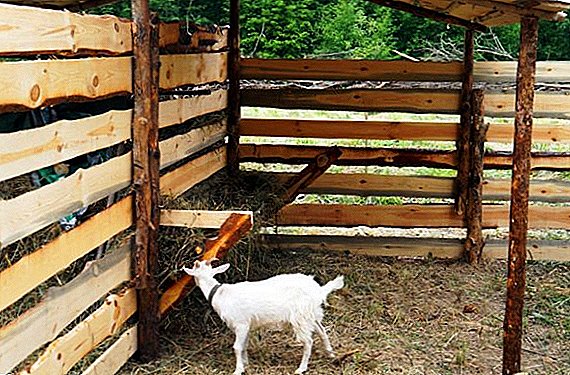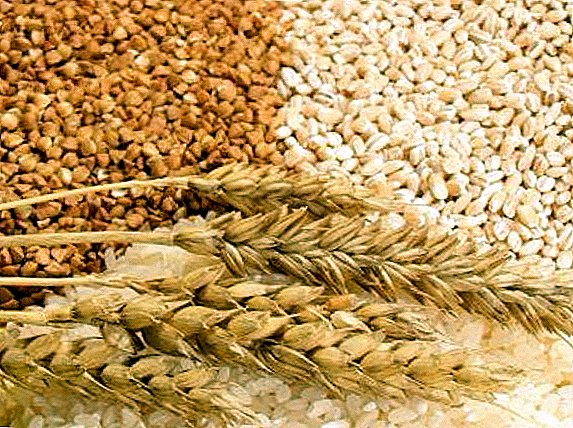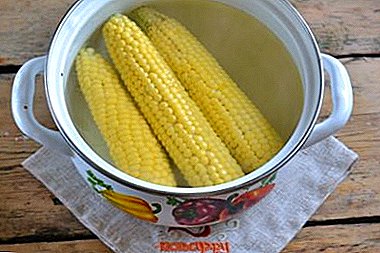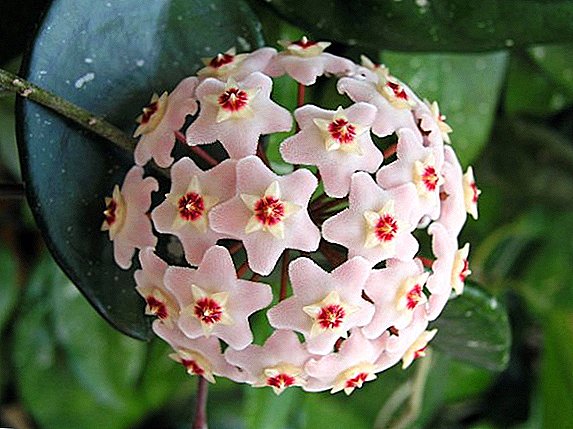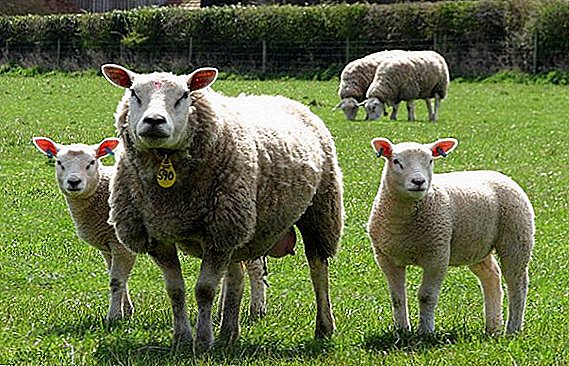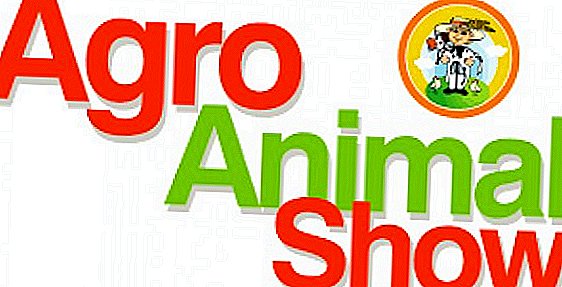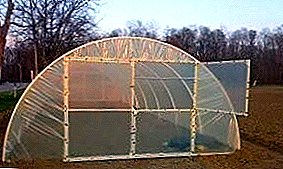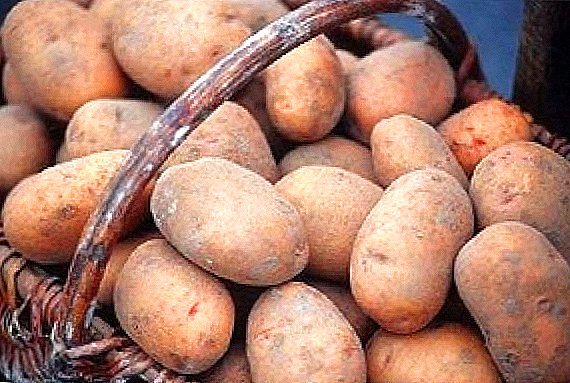
Every gardener grows potatoes here, but only one person out of 10 gets good harvests.
After all, we are all accustomed to, that this plant is not the most whimsical.
But, very often it happens that without much effort and the result is not obtained.
Today we want to describe in detail the essence and features of potato cultivation with the help of Dutch technology.
Many of those who have heard at least something about it, believe that it is suitable only for automated field processing.
However, familiar with this technology will be useful and ordinary gardeners, since most of its elements can be used on small beds.
The essence and special differences of the Dutch technology in the cultivation of potatoes
This technology has many distinctive aspects that we often do not take into account at all.
After all, in truth, almost all gardeners believe that it is enough just to cover the planting material with fertilizer with the soil, once or twice, and in the autumn you can harvest.
Well, another aspect is the Colorado potato beetle, which often has to be very tricky to get rid of this plant pest.
Thus, having harvested a crop of 250 kilograms of potatoes from one weave, gardeners usually remain satisfied, even without realizing that up to 450 kilograms of good food tubers of this plant can be harvested from the same area.
And this is the main feature of potato cultivation using Dutch technology - an unusually high yield.
And it is achieved through the implementation and adherence to the following principles:

- For breeding potatoes are used exclusively high-yielding and high-quality Dutch varieties. Even their average yield reaches 40 tons per hectare. By the way, to get these varieties is not at all difficult, because today there is already an excellent export of Dutch potatoes to more than 70 countries of the world. In particular, these varieties are very popular among Belarusians. Among them are:
- "Anosta";
- "Auzonka";
- "Marfen";
- "Mona";
- "Rezi";
- "Ramono";
- "Sante".
- The technology involves the use of extremely healthy planting material.
Not many people think that when growing the same variety for several years in a row, not only its yield is reduced, but various diseases can also appear. Thus, the potatoes selected from previous harvests become carriers of rot, scab, and late blight.
It is for this reason that every five years It is recommended to change grades. In the Dutch technology, potatoes for planting are selected only of one size, 3-5 centimeters in diameter, and with 100% germination.
- An important role is played by the scheme of planting potatoes, as well as their processing from various pests and diseases. Considering such requirements is considered the most important basis for obtaining good yields.
Also, the feeding of potatoes should not just be carried out, but should be done based on the needs of the plant itself and of a particular variety. The technology also specifically describes how and when hilling should be performed, and how high the ridges should be formed.
- Timely harvesting. Here the main nuance will be that the harvest for the production of seed material will be carried out almost a month earlier than potatoes for food purposes. This is what provides good germination results in the future.
If you meet any other varieties - get acquainted with their ripening terms, adaptive capabilities, and if all this allows you to grow a variety on your site - feel free to try.
Of course, this is not all of its features, because we will tell about the individual both below and in more detail. But already from the above points it is clear that a lot of effort will have to be made to get a good harvest, especially if you plan to organize large-scale cultivation of this plant.
It is also interesting to read about the cultivation of potatoes under straw
What are the conditions to grow potatoes in order to achieve the results of Dutch farmers?

As is well known, friable soils are best suited to potatoes, the emphasis on which is being done in the described technology. Even before planting the tubers into the soil, the latter must be well processed, tilted or milled.
Due to this, it is saturated with oxygen, which, in turn, accelerates the emergence of shoots. But not only the soil is the main condition for the good growth of this plant, so we will consider others.
We create the most favorable conditions for the growth of potatoes
First of all, the Dutch are baked to ensure that on the field where the potatoes are planted, a regular crop change is carried out. The same place will be able to provide this plant with sufficient nutrients only if it is planted on it once every three years. At the same time, the best precursors for potatoes will be winter cereals.
There are also requirements for what should be the relief of the area for planting this crop. In particular, much preferable select flat areas without slopes. Indeed, moisture is not evenly distributed on the slopes, and when some plants lack it, others may have a surplus.
Regarding the type of soil, the presence of humus in its arable layer, which should be no less than 2-2.5%, will play a big role in the fruiting of potatoes.
Preparing planting material for growing: the main aspects of preparation
In the Dutch technology, a lot of attention is paid to planting material, since the entire future harvest will depend on it.
And even if you pay maximum attention to the potato field, when the tubers planted in the soil have poor germination or are infected with diseases, the result will be bad.
How to choose a good planting material: criteria and characteristics

Above, we noted that this technology provides for the selection of tubers of small size, which are specifically left for future planting.
It is this fact that is worth paying attention not only to farmers, but also to ordinary gardeners who plant this plant on their several hundreds.
Dutch farmers consider mandatory use for planting exclusively health materialwhich is not a carrier of diseases and viral infections.
Therefore, only high quality and certified seed potatoes are used, while selecting the most productive varieties. In particular, attention is drawn to the following criteria:
- diameter of tubers from 3 to 5 centimeters;
- varietal purity, which excludes the possibility of manifestation in the future crop of the qualities of other potato varieties;
- 100% material germination;
- High reproduction - the size of the bush and the number of tubers under it, their size. This factor also uses such concepts as "super elite" and "elite", without designating which the potato will not be used as seed material.
Another very important aspect of Dutch technology is planting potatoes already germinated. Actually, this fact is evidence that the seeds have 100% germination.
It is only important that the sprouts do not have time to reach in their size more than 0.5 cm, otherwise they will break off during machine landing, which, on the contrary, may reduce the number of plants obtained.
We are engaged in preparing the soil for planting potatoes

Soil preparation should begin to engage in the fall. At this time, it must be plowed to a depth of 22 to 27 centimeters.
It is better to use such plows that are able to wrap the top layer of soil, just as we do when digging the beds with a shovel. If this fails to be done to you, then after plows, dump or furrow grooves should be put on the field.
Cultivator for the field of potatoes is better to use a conventional disk, which is light enough for the soil.
In the spring, when it is almost time for planting potatoes, you need to soil to start a mill or a cultivator mill, which would have done the soil at a depth of 12-14 centimeters.
Since heavy tractors are used as a milling tool for the cutter, along with loosening and grinding the soil, it is also leveled and dropping. In the conditions of cottage cultivation of potatoes, the role of friezes for beds can be performed by ordinary forks, with a distance of 2-3 cm between the teeth and a tooth thickness of 0.5-0.6 centimeters.
Such forks usually have a special depth limit, so it will be too difficult to work with them.
The essence of such a shallow soil study in springtime is that it allows to keep the soil capillaries that had formed since autumn. The role of the latter for potatoes, which will be planted in the future, is that through the capillaries moisture will flow to the mother tuber.
Thus, the plant will be well supplied with moisture, it will suffer less from droughts. Moreover, soil tillage with a cutter will give you a big advantage in terms of ripening potatoes, speeding up this process by about 7-10 days.
Planting potatoes: the embodiment of Dutch technology
When to plant: discuss the most favorable dates

Many gardeners are used to start growing potatoes almost from the very beginning of spring. The main criterion is often considered such a state of soil moisture, until it begins to fall away from the shovel. But still, we must not forget about the thermophilicity of potatoes and the fact that it should be planted in a sufficiently heated soil.
Our grandfathers had one very correct indication, which allowed them to begin plowing the ground and throwing potatoes into it - this was the opening of birch leaves.
But for the Dutch, such national definitions of terms for planting potatoes are not significant at all, although they have the same goal, and the result is, in general, the same. But still, a good method is the orientation itself on the state of the soil.
In no case should one make a gap between preparing the soil and planting potatoes, since this will cause the first to dry out and lose its main properties.
Planted potatoes when the soil "ripen". To determine this maturity, you need to take a handful of soil in your hand, squeeze it with your palm and throw it on the ground from the height of your belt. If a fallen lump falls to pieces from hitting the soil, this will indicate the maturity of the soil, if not, wait until it dries a little.
Such planting dates give the plant the opportunity to form the maximum possible leaf surface (which speeds up the process of plant photosynthesis), and will also contribute to the rapid growth of tubers.
Planting Potato Bushes in Dutch Technology
The Dutch technology does not bypass the planting pattern of potato tubers. It is believed that one m2 can not be planted more than 30 stems of this plant, otherwise the plantings will be too thick.
So, on an area of one hundred square meters (100m2), it is allowed to plant from 400 to 1 thousand tubers. Since the planting material is used is not large, then it does not make sense to embed it too deeply - it is best to send it to a depth of 4 centimeters.
But, in order that over time the potato does not appear on the surface, immediately after germination, an earthing up of the bushes is carried out, which involves the formation of crests up to 25 centimeters in height.
As for inter-rows, it is most effective to leave between them a space of 65-80 centimeters. Of course, many will decide that this is too much, but such an area will be just enough for good nutrition of the potato root system, since the distance between the tubers in the same row is assumed not so large.
Does the potato need care and what is its essence: answers to the main questions

Potato care is needed, especially if you want to complete the planned line to grow it using Dutch technology. Already at 14-18 days after planting, it is necessary to begin to carry out the first processing between the rows, because at this time most of the weeds will have time to appear and the sprouts of potatoes are about to appear above the surface.
Thus, your main task is remove all weedsso that they do not interfere with the growth of potatoes. For large areas of plantations for this purpose, use a milling cultivator that has a ridge former.
The width of the grip on such a machine is 3 meters, which allows for the processing of row spacings very quickly. After it leaves trapezoid ridges, up to 25 centimeters high, thus covering potato seedlings with a layer of well-loosened soil.
The advantages of this type of tillage between rows is that not only all the weeds are removed, but with obtaining trapezoid crests, it is possible to more effectively distribute moisture near the potato.
In particular, all excess moisture will penetrate the ridge without problems (since its soil is very loose), and its excess will flow into the furrow without harming the root system.
Further, the described technology does not provide for any inter-row processing, but considers the following measures to be mandatory processing of potato plantations:

- Application of herbicides. Since the mechanical tillage is no longer carried out, and the weeds never stop their growth, the soil is also treated with special herbicidal preparations.
- Fight against blight. For this purpose, only chemicals are used, since it is not amenable to other influences. During the season 5-6 treatments are carried out. To spend the first time is only when the plants show the first signs of the appearance of the disease.
- Watering potato plantations. Held at least 3 times in one season. The first watering is carried out before the start of flowering of the bushes, the second 10 days after the flowers are completely wilted, and after about 20 days another one.
We start harvesting potatoes: the timing and storage features of the crop
In time to harvest from the field is very important. Moreover, the timing of fees will depend on the purpose for which you need the resulting crop: for seeds or for food purposes. In the first case, the cleaning is carried out at the very beginning of August, and in the second - at the end of the same month.
Another important point: to remove from the field, you first need the tops, and after 10 days, and the potatoes themselves. Due to this, the tuber rind will be stronger and yields will be stored longer. For storage it is important to provide high humidity and a cool room with good ventilation. Best of all, potatoes are not stored in bags, but in wooden boxes.




